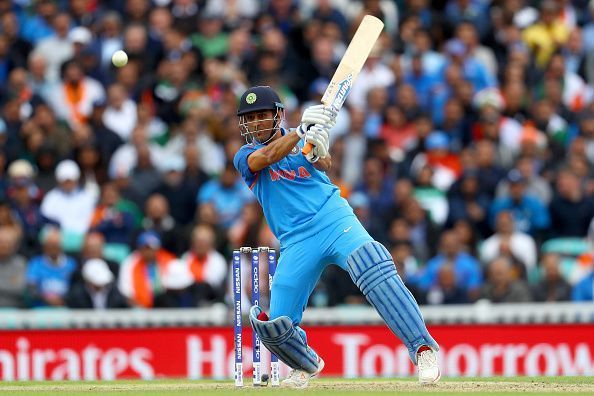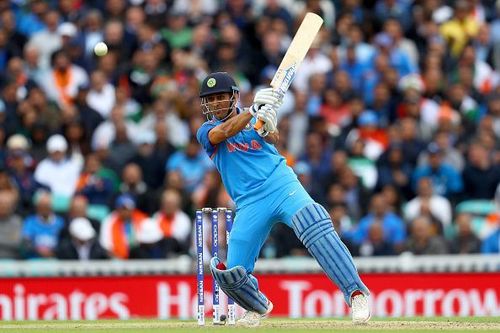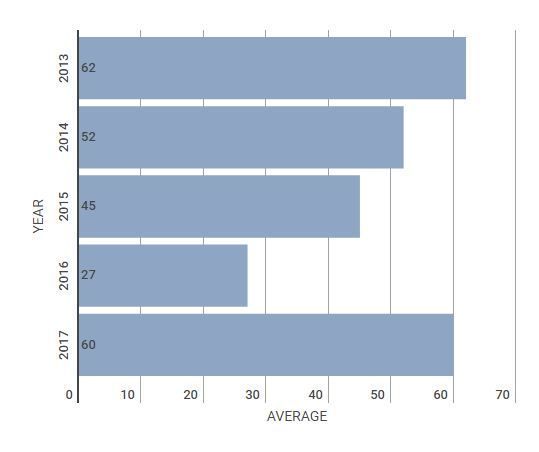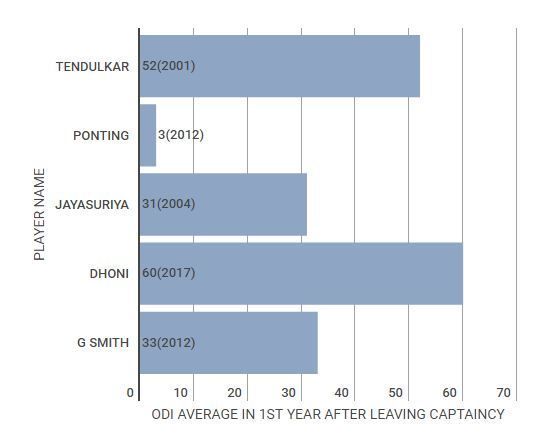
MS Dhoni 2.0: Liberated, free and mighty effective

On the 15th of January 2017, India embarked on a fresh journey in the full-time leadership of Virat Kohli in the limited-overs leg of England's tour to India.
Ten days prior, MS Dhoni had decided he had enough of leading the side, resigning from his post of India's limited-overs captain, with an incredible record and an almost unmatchable legacy.
Expectedly, there was an outpouring of reactions to the decision from his large fan base, but once the decision began to sink in, the attention drew towards what Dhoni the player could now achieve, with the burden of captaincy no longer on his head.
The early indications were promising.
In his second game, he made 134 at Cuttack to help India get out of a hole against England and ensured they reached a total that was a bridge bit too far for the visitors.
It was the kind of innings everybody had expected from him for a long time. While Dhoni remained among India's best limited-overs batsmen, the last few years had not yielded the big scores one expected from him and add to that, the consistency to his finishing had taken a dip.
Then came the Champions Trophy and in the match against Sri Lanka, he made a 52-ball 63 to help India post 321.
However, it was in the second half that 2017 that Dhoni produced many an innings of substance.
Twice in the space of two months, Dhoni played significant roles in bailing India out of trouble waters. The first of those came in Sri Lanka when he, along with Bhuvneshvar Kumar guided India to a three-wicket win at Pallekele after Akila Dananjaya had rocked the Indian middle-order.
Then, against Australia in Chennai, he once again saved a sinking ship along with Hardik Pandya to help India post a match-winning total.
In both those cases, he took the back seat and allowed the young turks to take control.
He was the skeleton. The one who was there, but could not be seen, while his partners were the blood flow, who kept the body ticking along. He was more than willing to give the limelight away, in the meantime guiding his side to safety.
There was the odd blemish in his sheet, like the knock in the T20I against New Zealand at Rajkot, but he made up for them by scoring cameos in the forthcoming matches against Sri Lanka, when he was promoted up the batting order.
Overall, in 2017, Dhoni amassed 788 runs in 29 ODI matches at an average of 60.
It was his best year as a batsman since 2014, when he averaged 52.25 and it was also the first time since 2013 when he had scored an ODI hundred.

Usually, when a responsibility like captaincy is taken away from any player, it relieves him from a lot of pressure.
Suddenly, he is not expected to be the man on whom the axe is hanging, he is not in the forefront of all matters concerned. He becomes just a player, who needs to keep contributing for his side.
When you look at the greats of the modern era, the likes of Sachin Tendulkar, Sanath Jayasuriya and others, you will observe that the performances in the ODI format has been mixed after leaving captaincy.

The image is a reflection of how the burden has freed MS Dhoni the batsman. An average of 60 is double that of Jayasuriya and Graeme Smith and is indicative of how invaluable he remains in India's limited-overs set-up.
Moving forward, in 2018, India have a key decision to make, which is whether to promote Dhoni higher up the order or not.
He continued to bat at 5 or 6 in 2017, but India kept playing musical chairs as far as the Number 4 slot was concerned.
In the past, Dhoni has spoken of the desire to bat higher up the order and on the odd occasion come in that position and succeeded.
Will the team management be willing to give him another shot at Number 4? The answer to that, we will know in the upcoming 12 months.